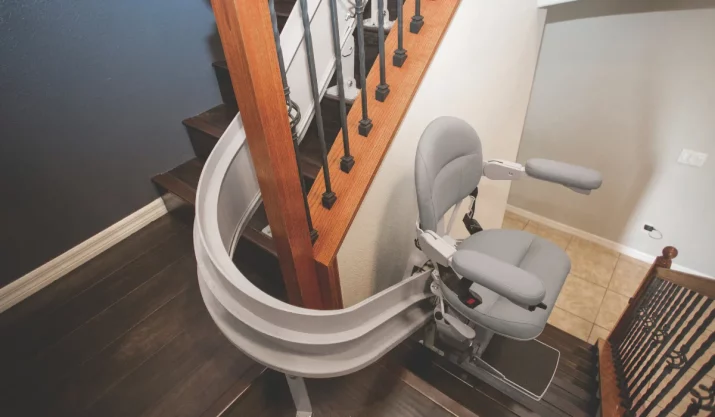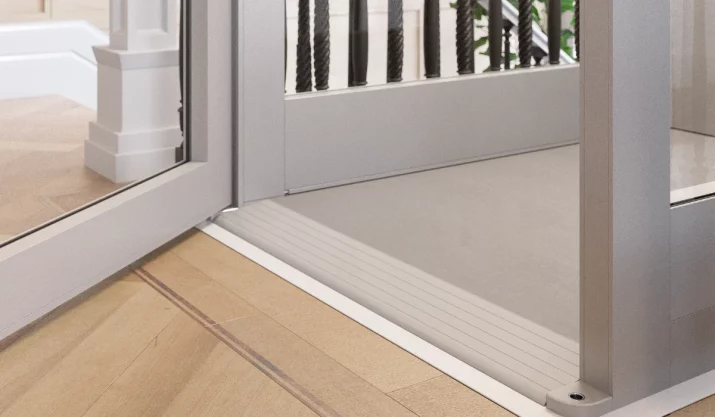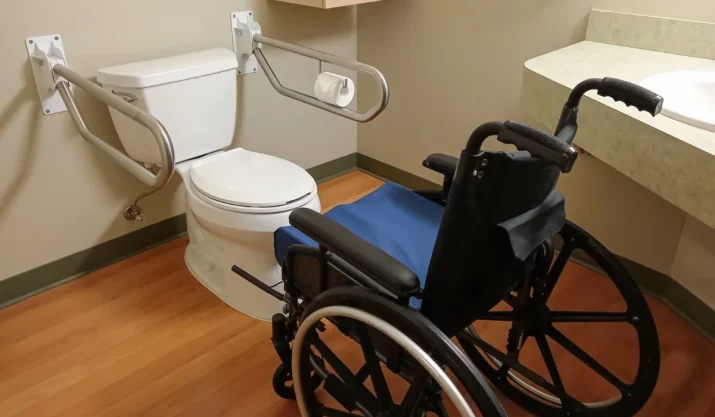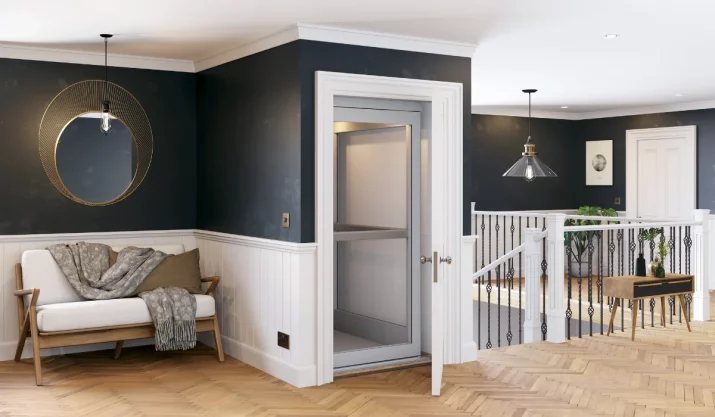Common Stairlift Problems and How to Prevent Them

Table of Contents
When your stairlift stops working the way it should, it’s not just inconvenient. It can also be unsafe. Whether you’re helping a loved one stay independent or using a stairlift yourself, identifying issues early is crucial to maintaining a safe and functional home.
In this guide, we’ll walk you through common stairlift problems like beeping, power failures, and armrest issues. We’ll also provide you with some stairlift maintenance tips and teach you how to prevent common stairlift issues.
Key Takeaways
- A beeping stairlift often means it’s not charging correctly. Always check the charger, batteries, and docking position to ensure your stairlift is charging correctly.
- Obstructions, incorrect key switch settings, or power supply issues can cause common stairlift problems, such as sudden stops or a lack of movement.
- Regular maintenance can resolve most stairlift issues. Clean the rail and check the controls regularly.
- Error codes and diagnostic displays on modern stairlift models can help you identify issues quickly and avoid unnecessary repairs.
What common stairlift problems mean and what you can do
Adults older than 60 have the highest risk of serious injury or death due to falls.
Installing mobility devices, such as stairlifts, around your home is a great way to ensure comfort, safety, and accessibility for loved ones with limited mobility or for yourself. A chairlift is a practical choice if you live in a two-story house and plan to age in place.
However, stairlifts can have issues. Here are some common issues stairlift users can encounter and some troubleshooting tips you can try:
Stairlift beeping
Many stairlift users complain that their stairlift won’t stop beeping. In most models, beeping serves as a built-in warning to indicate an issue that requires immediate attention.
Causes of the stairlift beeping:
- Not at a charging station: If your stairlift isn’t docked at its charge point, it may start beeping to alert you that the battery isn’t charging.
- Low stairlift batteries: If the batteries are aging or not holding a charge, they can trigger the beeping.
- Track obstruction: Even small objects on the stair lift rail may interrupt function and cause a warning signal.
How to troubleshoot:
- Ensure the stairlift is fully docked at the top or bottom of the stairs, depending on the model.
- Inspect the charging station for loose connections.
- Check the user manual for model-specific beeping patterns or error codes.
Stairlift won’t move: Is it a power supply or key switch issue?
If your stairlift isn’t moving at all, even when you press the button, your lift may have a power issue. You may have a tripped circuit breaker, an unplugged unit, or a turned-off key switch.
Things to check:
- Power supply: Check that the unit is plugged in and that the circuit breaker hasn’t tripped.
- Key switch: Many stairlift models have a key switch, a safety feature that prevents unauthorized or unsupervised use of the chairlift.
- Remote control: Dead batteries or interference can cause the stairlift to be unresponsive.
Preventive tip: Keep spare remote control batteries handy and inspect your power outlet monthly to ensure the charger is functioning correctly.
Stops mid-track: Obstructions and safety switches
If your stairlift begins to climb along the stair rail but stops midway, your stairlift may have a mechanical issue. Something as simple as a rogue toy on the track or a misaligned footrest can trigger your device’s safety sensor.
What to look for:
- Obstructions: Small objects, pet toys, or even a small piece of debris on the stair lift rail can block the sensors.
- Footrest safety switch: The footrest or swivel seat may be misaligned or bumped out of place.
- Armrest toggle: If the chair arm isn’t entirely in place, it may trigger a stop.
Troubleshooting tip: Gently inspect the rail, footrest, and armrests for any damage. Clear any obstructions and ensure everything is locked into position.
Error codes and diagnostic tools
Modern stairlift models, such as the Bruno Elan stair lift and Stannah lifts, come with diagnostic displays. These show error codes that can help you identify the problem and troubleshoot the issue.
Standard stairlift error codes include:
- Battery low
- Safety switch open
- Track obstruction
- Motor overcurrent
Troubleshooting tip: Keep your user manual nearby so you can refer to it when checking the meaning of different error codes for your stairlift. You can also look up stairlift troubleshooting tips online from your manufacturer.
Stairlift won’t charge: Is it the charger, batteries, or alignment issue?
If your stairlift batteries keep running low or the unit won’t charge at all, there may be an issue with the charger or the way the lift docks. For example, if the stairlift isn’t correctly aligned at the charging station, it may appear to be in place but still not connect sufficiently to charge the batteries.
Causes:
- Not aligned with the charging station: This is especially common in curved stairlift models, where precise alignment with the charging station is harder to achieve. Even the slightest misalignment can keep the batteries from charging properly.
- Faulty charger or charge point: Even a sturdy charger can wear out or become disconnected due to repeated use over time.
- Battery age: Batteries usually last 3–5 years. If yours are older, consider replacing them.
Maintenance tip: Ensure the stairlift is parked at the designated charging spot or lowered to the ground. Check the charger and wires for any loose connections or damage. At your next maintenance visit, ask your stairlift technician to test the battery voltage to make sure it’s holding a proper charge.
Lubricate your chairlift when you hear this.
One of the most obvious signs that your stairlift has a problem is when it starts making noise. If your stairlift starts making grinding, squealing, or clunking noises, something’s wrong. These sounds typically indicate that you need to lubricate, clean, or tighten a specific part.
Possible causes:
- Dry track: A dry tack can cause rough or noisy rides.
- Loose components: A loose bolt or worn gear might be causing extra movement.
- Malfunctioning motor: If the motor struggles to move the chair smoothly, it may need more than just troubleshooting. You may need to get your unit professionally serviced.
Maintenance tip: Stairlift manufacturers may recommend using a specific lubricant for your device. Avoid using household oils or sprays, as these can damage the parts. To keep your stairlift running smoothly, schedule a service call at least once a year to maintain parts in optimal condition.
Remote control and armrest controls are not working
If neither the remote nor the chair arm controls respond, it’s likely one of the following:
- The battery is dead in both controls
- Blown fuse or tripped circuit breaker
- Broken circuit board
Maintenance tip: Start by replacing the remote batteries. If that doesn’t fix the issue, check your home’s fuse box for a tripped breaker. If it still doesn’t work, contact a stairlift technician for stairlift repairs.
Stairlift installation and stairlift models: Not all issues are user error
Recurring chairlift problems may happen because the stairlift installation was done poorly. Your stairlift model may be an older model that no longer fits your needs or staircase layout:
- A straight stairlift installed on a curved staircase may lead to chronic stopping or noise.
- An incorrect rail angle can prematurely wear out components.
If you’re in California and dealing with an older model that keeps causing problems, it might be time for an upgrade.
A Certified Aging-in-Place Specialist (CAPS) can help you choose a stair climber that fits your staircase and lifestyle. At California Mobility, we are Certified Aging-in-Place Specialists, and our priority is to help you make safety-focused home modifications that support aging in place.
Preventing common stairlift problems
Routine maintenance goes a long way. Here are steps you can take to prevent most stair lift issues:
- Clean the track weekly: Use a dry cloth to wipe away dust, hair, and debris from the rail. A clean track helps the stairlift move smoothly and prevents wear on the motor.
- Inspect the seat belt, swivel seat, and footrest monthly: Check that the seat belt latches securely, the seat turns properly, and the footrest isn’t loose or misaligned. These parts keep you safe during each ride.
- Keep the charger connected at all times: Always park the stairlift at the charging station in the down position when not in use. This keeps the batteries complete and ready for your next trip.
- Don’t ignore beeping or error codes; address them promptly. A beeping sound often means there’s a low battery or a mechanical issue. Refer to your user manual or contact your service provider to prevent more significant issues.
- Schedule professional stairlift service annually: A yearly checkup catches hidden issues before they become major repairs. Technicians can also lubricate parts, test safety features, and update worn components.
Many issues can be caught early with regular maintenance. If something feels off, it’s always better to have it checked sooner rather than later.
Final thoughts
A stairlift should feel safe and easy to use every day. However, minor problems, such as a loose armrest or a weak battery, can escalate into major issues if left unaddressed. With a bit of know-how and regular maintenance, you can fix most stairlift problems early and skip expensive repairs.
If you live in California and need help with your stairlift, California Mobility has you covered. We provide expert stairlift installation, maintenance, and repairs across the state, from Sacramento to San Diego. Contact us today, and we’ll help you with any issues you may have with your stairlift.






